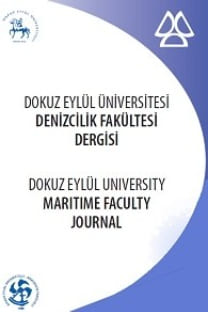IMO DENETİMİNİN GELİŞTİRİLMESİ VE GEMİ KAZALARININ AZALTILMASI İÇİN TÜRKİYE MODELİ
IMO’nun amacı hem ekonomik hem de insani
kayıplara yol açan gemi kazalarının azaltılmasıdır. IMO tarafından yapılan
düzenlemeler gemilerin güvenli seyri için yapılması gerekenleri içermektedir.
Düzenlemeler ile uyumluluğun kontrol edilmesi için kullanılan temel mekanizma,
IMO’nun isteği ile üye devletler tarafından yapılan denetimlerdir. Bu
denetimlerin birincisi hem geminin hem de üzerindeki cihazların teknik
özellikleridir. İkincisi ise gemide bulunması gereken personel sayısı ve bu
personelin sahip olduğu niteliklere ilişkindir. Dünyanın farklı bölgelerinde
denetimlerin ne derece etkili uygulanabildiği konusunda ciddi tutarsızlıklar
vardır. Türk bandıralı gemiler geçmişte denetimlerde kötü sonuç aldıkları için
kara listede yer almışlardır. Ancak 2006 yılından itibaren bu denetimlerden iyi
sonuçlar alarak beyaz listede geçiş yapmışlardır. Bunun yapılan bir dizi yasal
düzenlemenin sonucu olduğunu savunmaktayız. Hangi düzenlemelerin etkili
olduğunu belirlemek konusunda yaptığımız çalışmanın sonuçlarını, bu Makalede
öneri olarak sunmaktayız. Benzer sorunları yaşayan ülkeler bu Makaledeki
örnekler ve önerilerden yola çıkarak IMO denetimlerinde sağladıkları başarı
oranını artırabilirler. Bunun anlamı ise sağladığı ekonomik faydanın ötesinde
daha az kaza ve daha az hayat kaybedilmesi demektir.
Anahtar Kelimeler:
Gemi Kazaları, Bayrak Devleti, Beyaz Liste, Kara Liste, IMO Düzenlemeleri
THE TURKISH MODEL FOR IMPROVING IMO SURVEY RESULTS AND REDUCING SHIP ACCIDENTS
The
purpose of the IMO is to reduce the number of ship accidents, which have both
economic and human costs. IMO regulations define what is required for voyages
to be safe. The primary mechanism for checking compliance are surveys which are
performed by member states. These check both technical and human-related
aspects of the ship. The first includes the features of the ship and the
equipment on board. The latter is regarding competencies of the personnel.
There are significant discrepancies in the effectiveness of surveys in
different regions. Over recent years Turkish ships have
transitioned from performing poorly in surveys to performing well. We argue
this is the result of a series of legislative decisions. We identify which
legislative decisions these are and present them as a repeatable recipe.
Countries facing similar difficulties can follow this example with the aim of
improving IMO compliance; which in turn means economic benefits, less accidents
and less lives lost.
Keywords:
Ship Accidents, Flag State, Whitelist, Black List, Imo Regulations,
___
- Alter, K. J. and Meunier, S. (2009). The politics of international regime complexity. Perspectives on politics, 7(1), 13-24.
- Bloor, M., Datta, R., Gilinskiy, Y. and Horlick-Jones, T. (2006). Unicorn among the cedars: On the possibility of effective ‘smart regulation’ of the globalized shipping industry. Social & Legal Studies, 15(4), 534-551.
- Hassler, B. (2008). Environmental conventions, pro-active countries and unilateral initiatives—Sweden and the case of oil transportation on the Baltic Sea. Journal of Environmental Policy & Planning, 10(4), 339-357.
- Kim, D. J. and Kwak, S. Y. (2011). Evaluation of human factors in ship accidents in the domestic sea. Journal of the Ergonomics Society of Korea, 30(1), 87-98. Knapp, S. S. (2007). The Econometrics of Maritime Safety:" Recommendations to Enhance Safety at Sea", Doctoral Thesis, Erasmus University Rotterdam, Erasmus Research Institute of Management (ERIM).
- Knapp, S. and Franses, P. H. (2008). Econometric analysis to differentiate effects of various ship safety inspections. Marine Policy, 32(4), 653-662.
- Knudsen, O. F. and Hassler, B. (2011). IMO legislation and its implementation: Accident risk, vessel deficiencies and national administrative practices. Marine Policy, 35(2), 201-207.
- Mitroussi, K. (2003). The evolution of the safety culture of IMO: a case of organisational culture change. Disaster Prevention and Management: An International Journal, 12(1), 16-23.
- Sampson, H. and Bloor, M. (2007). When Jack gets out of the box: the problems of regulating a global industry. Sociology, 41(3), 551-569.
- Tzannatos, E. (2010). Human element and accidents in Greek shipping. The Journal of Navigation, 63(1), 119-127.
- Tzannatos, E. and Kokotos, D. (2009). Analysis of accidents in Greek shipping during the pre-and post-ISM period. Marine Policy, 33(4), 679-684.
- Internet References
- Deniz Ticareti Genel Müdürlüğü. (2018). Paris Mutabakatı Kapsamında Tutulan TBG Analizi. https://atlantis.udhb.gov.tr/istatistik/files/DIGER_ISTATISTIKLER/GEMI_DENETIM_ISTATISTIKLERI/2018/Paris_Mutabakati_KapsamindaTutulan_Turk_Bayrakli_Gemi_istatistikleri.xls. Erişim Tarihi: 04.02.2019.
- Kıyı Emniyeti Genel Müdürlüğü. (2018). Kaza Analizi İstatistikleri, https://www.kiyiemniyeti.gov.tr/resmi_istatistikler. Erişim Tarihi: 20.01.2019.
- ISSN: 1309-4246
- Yayın Aralığı: Yılda 2 Sayı
- Başlangıç: 2009
Sayıdaki Diğer Makaleler
IMO DENETİMİNİN GELİŞTİRİLMESİ VE GEMİ KAZALARININ AZALTILMASI İÇİN TÜRKİYE MODELİ
TÜRKİYE’DEKİ KONTEYNER LİMANLARININ ÇIKTISINA ÖNCÜ BİR GÖSTERGE OLARAK ENDÜSTRİYEL ÜRETİM
ABDULLAH AÇIK, Bayram Bilge SAĞLAM, Burhan KAYIRAN
DEĞİŞİK YÜK SENARYOLARINDA GEMİ ÇEVRESEL, SOSYAL VE MALİYET ANALİZİ
MANAVGAT BÖLGESİ TEKNE İMALAT VE ÇEKEK YERLERİNİN FAALİYETLERİ VE SORUNLARI ÜZERİNE BİR ARAŞTIRMA
Mehmet Fatih YILMAZ, Mehmet Bilge Kağan ÖNAÇAN
BOŞ KONTEYNER KONUMLAMASI PLANLAMA DÜZEYİ VE MODEL TÜRLERİ SINIFLANDIRMASI
